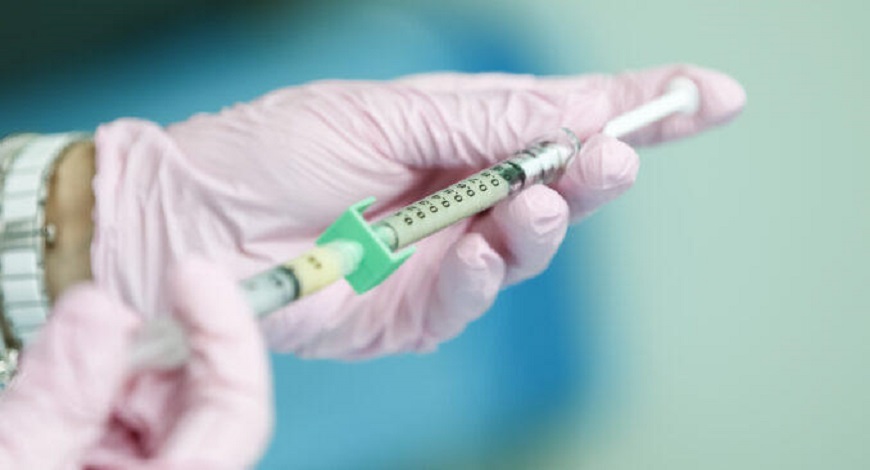June 5, 1981, the United States CDC published a report describing five cases of pneumonia in young gay men. The same day, the CDC received a call warning about a cluster of unusually aggressive cancers in New York. After the Associated Press picked up the story of these strange cases, the CDC received dozens of similar reports of pneumonia, cancers, and severe infection. An epidemic has been born.
It wasn’t until over a year later, on September 24, 1982, that the CDC defined the term Acquired Immune Deficiency Syndrome, or AIDS. Over 240 people had already died.
After the Associated Press picked up the story of these strange cases, the CDC received dozens of similar reports of pneumonia, cancers, and severe infection.
Fenway Health, a Boston-based LGBTQ community health center, was one of eight sites selected to conduct the first vaccine trials in 1994, 12 years later. Dr. Kenneth Mayer was working with the organization on STI prevention at the time. He is now the Medical Research Director and Co-Chair of The Fenway Institute, serving as the education and community activism arm of the organization.
“We realized that Fenway might be in the epicenter of … an emerging epidemic,” Mayer said. “So I helped Fenway develop some initial studies to understand what were the factors associated with being sick or not being sick. And when the source of the epidemic was identified, we did some of the first studies looking at [correlates] of having antibodies against HIV.”
Early HIV vaccines selected specific characteristic proteins from the virus, copied the DNA that creates these proteins, and inserted them into a weakened virus — typically a flu or common cold strain. Once injected, the encoded proteins are produced by the weakened carrier virus, triggering the immune system’s B cells to produce specific antibodies designed to fight the HIV virus.
But the ultimate failure of early trials quickly began to reveal the lethal strength of HIV: a fast mutation process that creates incredible genetic diversity. One study found antibodies in unvaccinated HIV patients to be six months behind the quickly mutating viral infection.
But the ultimate failure of early trials quickly began to reveal the lethal strength of HIV: a fast mutation process that creates incredible genetic diversity.
“It’s very frustrating,” Mayer said. “To get to that point, you’re putting in a lot of effort, and then the review board says, ‘There have been enough infections compared to the placebo, we don’t think this is going to work.’ You have to stop the trial. That’s always very disappointing.”
In 2007, Merck researchers attempted to implement a new technique, aiming to stimulate T cells instead. The sibling of the B cell, T cells attack the virus themselves instead of producing antibodies to attack the virus.
The trial ended in devastation. Enlisting over 3,000 participants, the study found that the experimental vaccine had increased the odds of infection. Leaving a permanent scar on the already battered HIV community, no other research group has attempted to create another T cell HIV vaccine.
Persevering, the National Health Institute (NIH) and Johnson & Johnson spearheaded a new “mosaic” approach, attempting to elicit a response from a large number of specific B cells. While still limited in scope, this method attacks much more of the HIV mutations than earlier vaccines.
Nearly three decades after the first documented case of HIV, the NIH, with its Thai partners, announced the first successful results of an HIV vaccine trial. With an efficacy of 31.2 percent after 42 months, the 2009 trial marked the first statistically significant efficacy for an HIV vaccine but did not meet the 50 percent threshold for vaccine approval. Both the NIH and Johnson & Johnson tried and failed to improve upon these results, in 2020 and 2021 studies respectively.
In February 2021, Scripps, a California- and Florida-based vaccine research company, announced they had successfully produced preliminary results in a new technique dubbed the “holy grail” of HIV vaccine research. Instead of targeting specific B cells, they sought out to precisely target a rare type of B cell that produces a wide range of highly adaptable antibodies, beating out the virus’s mutations.
Instead of targeting specific B cells, they sought out to precisely target a rare type of B cell that produces a wide range of highly adaptable antibodies, beating out the virus’s mutations.
In the same press release, Scripps announced a partnership with Moderna. Instead of using a weaker virus to produce the viral target proteins from DNA, Moderna encodes the proteins into messenger RNA, which uses the existing machinery of the human body’s own cells to create the targeted proteins. With easier manufacturing processes, mRNA technology provides greater freedom and flexibility to vaccine developers. Mayer is hopeful for the new technology.
“We need vaccines,” Mayer said. “Globally, there are more than 1.5 million new HIV infections [per year]. If you think about some of the diseases that are historical memories now, like smallpox and polio, it really took vaccines.”
Journal of Global Infectious Diseases (2011). DOI: 10.4103/0974-777X.77299
AIDS Research and Human Retroviruses (2012). DOI: 10.1089/aid.2012.0103
Journal of Experimental Medicine (2008). DOI: 10.1084/jem.20072681






